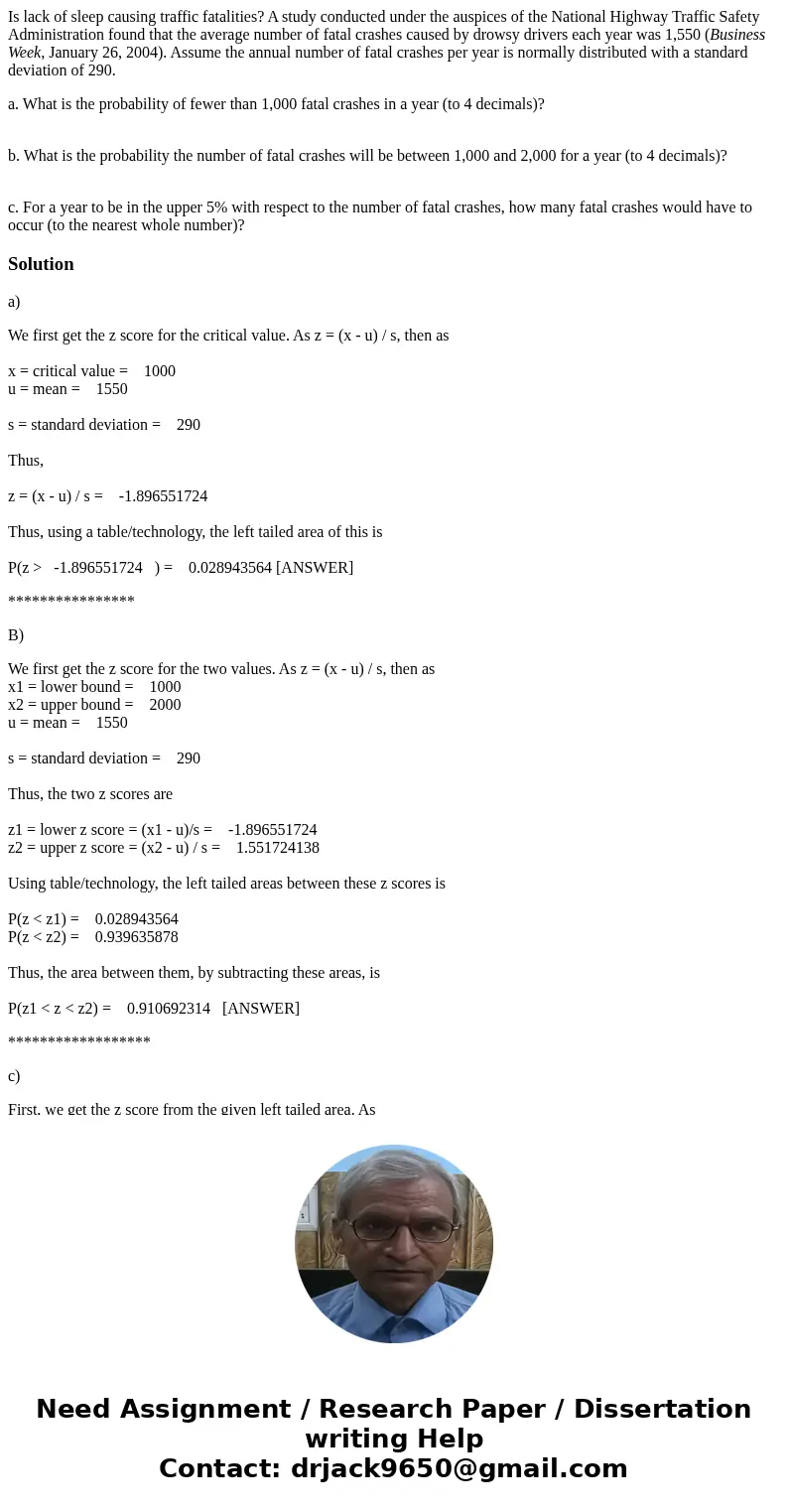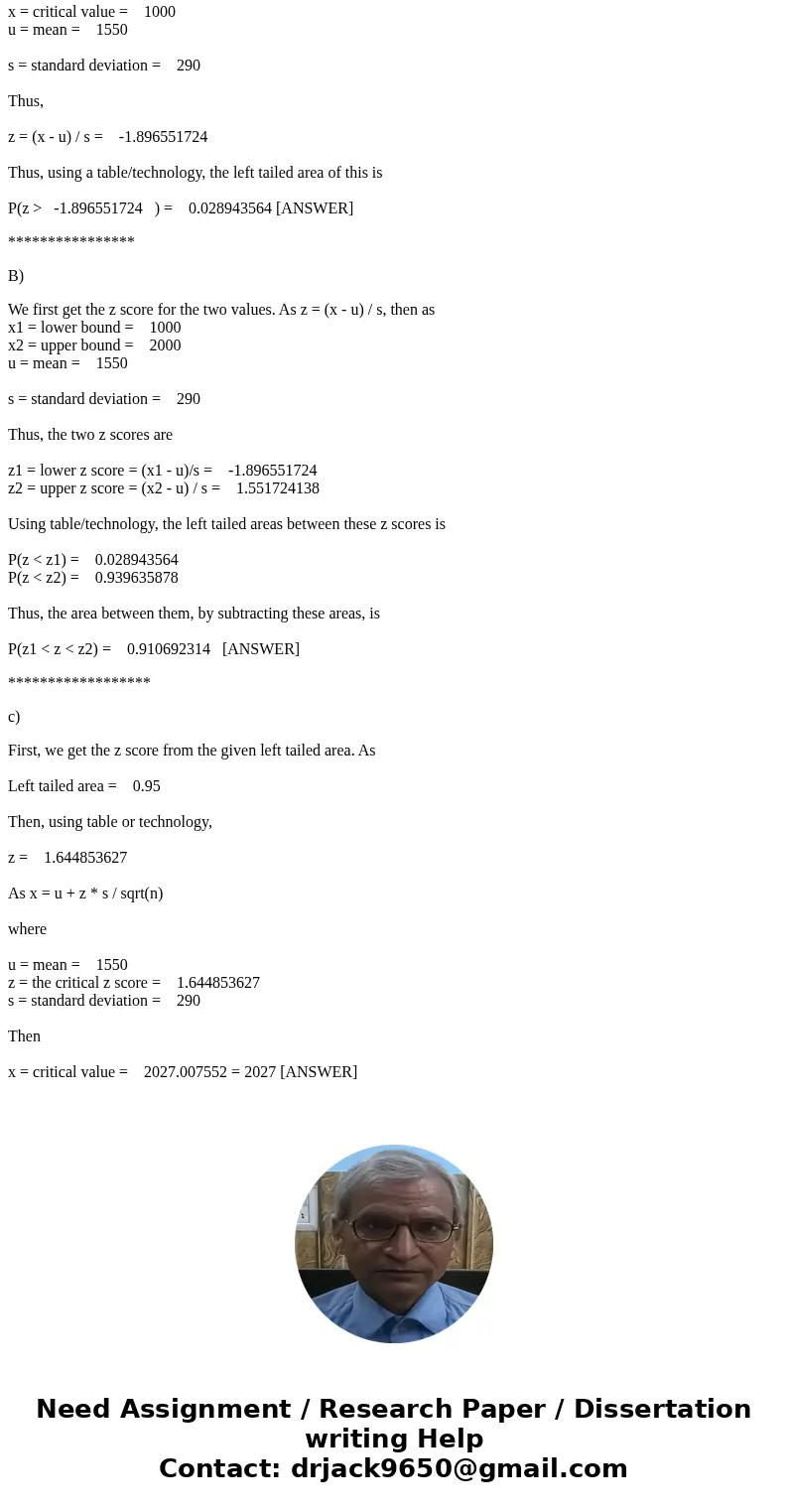Is lack of sleep causing traffic fatalities A study conducte
Is lack of sleep causing traffic fatalities? A study conducted under the auspices of the National Highway Traffic Safety Administration found that the average number of fatal crashes caused by drowsy drivers each year was 1,550 (Business Week, January 26, 2004). Assume the annual number of fatal crashes per year is normally distributed with a standard deviation of 290.
a. What is the probability of fewer than 1,000 fatal crashes in a year (to 4 decimals)?
b. What is the probability the number of fatal crashes will be between 1,000 and 2,000 for a year (to 4 decimals)?
c. For a year to be in the upper 5% with respect to the number of fatal crashes, how many fatal crashes would have to occur (to the nearest whole number)?
Solution
a)
We first get the z score for the critical value. As z = (x - u) / s, then as
x = critical value = 1000
u = mean = 1550
s = standard deviation = 290
Thus,
z = (x - u) / s = -1.896551724
Thus, using a table/technology, the left tailed area of this is
P(z > -1.896551724 ) = 0.028943564 [ANSWER]
****************
B)
We first get the z score for the two values. As z = (x - u) / s, then as
x1 = lower bound = 1000
x2 = upper bound = 2000
u = mean = 1550
s = standard deviation = 290
Thus, the two z scores are
z1 = lower z score = (x1 - u)/s = -1.896551724
z2 = upper z score = (x2 - u) / s = 1.551724138
Using table/technology, the left tailed areas between these z scores is
P(z < z1) = 0.028943564
P(z < z2) = 0.939635878
Thus, the area between them, by subtracting these areas, is
P(z1 < z < z2) = 0.910692314 [ANSWER]
******************
c)
First, we get the z score from the given left tailed area. As
Left tailed area = 0.95
Then, using table or technology,
z = 1.644853627
As x = u + z * s / sqrt(n)
where
u = mean = 1550
z = the critical z score = 1.644853627
s = standard deviation = 290
Then
x = critical value = 2027.007552 = 2027 [ANSWER]


 Homework Sourse
Homework Sourse